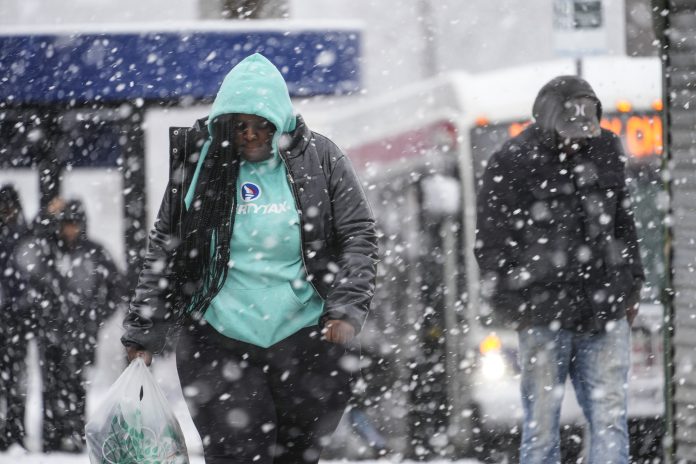A snowstorm swept through parts of the Northeast on Tuesday, causing widespread disruptions with flight and school cancellations, and urging caution on the roads.
However, as the storm progressed, some areas originally forecasted for heavy snowfall received less accumulation due to shifting weather patterns.
Over 1,100 flights were canceled by Tuesday morning, predominantly at airports in the New York City area and Boston. This marked New York City’s first significant snowstorm since February 2022, prompting the closure of schools and a transition to remote learning for its massive student population of 1.1 million.

Snowfall forecasts ranged from 6 to 12 inches across New England, Pennsylvania, and New Jersey. Despite the disruption, for some like Ricky Smith, heading to a construction job in the city, the snow brought a sense of tranquility to an otherwise quiet winter, though concerns for safety lingered.
Officials, including Mayor Eric Adams of New York City and Governor Ned Lamont of Connecticut, issued stern warnings, emphasizing the importance of staying off the roads and allowing snow removal crews to work efficiently. Lamont highlighted the storm’s timing, particularly its impact on morning rush hour commutes, as a cause for concern.
In response to deteriorating road conditions, the Pennsylvania Department of Transportation reduced speed limits on several interstates, while local law enforcement, like the Doylestown Township Police Department, urged residents to stay home unless it is absolutely necessary.
The National Weather Service predicted the highest snowfall totals for the northern suburbs of New York City and southwestern Connecticut, coupled with strong wind gusts, particularly along the Massachusetts coast.

In anticipation of the storm’s severity, closures and bans were implemented across cities and towns, with non-essential government employees instructed to stay home in Massachusetts and a tractor-trailer ban enforced in Rhode Island. Meanwhile, emergency crews and power companies braced for potential outages, strategically deploying resources to swiftly address any disruptions.
Despite the challenges posed by the storm, officials in New York City affirmed their commitment to providing shelter for the homeless, opting not to relocate individuals from heated tent complexes.
Elsewhere, in the South, flood watches were issued for Alabama and parts of central Georgia, with significant rainfall expected. The storm’s impact extended to power outages, affecting over 120,000 utility customers across West Virginia and Pennsylvania.


